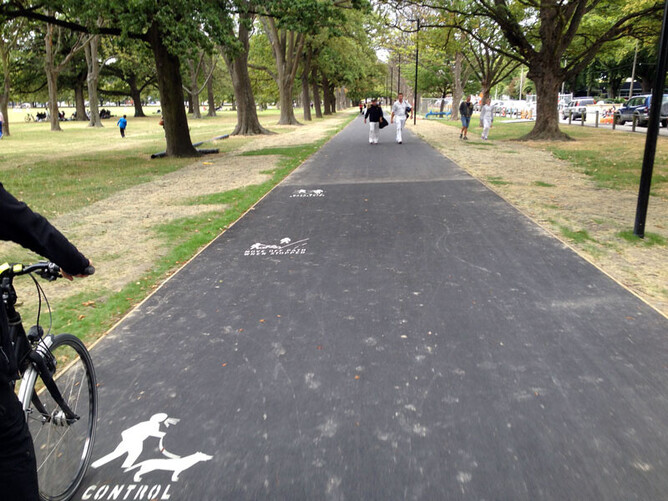As an occasional cyclist I’m happy that we have so many wonderful shared and cycling paths in and around Cambridge. When I used to cycle more regularly, I often had to take more risks than I was comfortable with. Cycling on shared paths offers a wonderful way to enjoy the outdoors while commuting or exercising, but it also requires mindfulness and respect for other users. Pedestrians, joggers, wheelchair users, and fellow cyclists all share these spaces, so practicing good etiquette ensures everyone’s safety and enjoyment. Here’s a guide to keeping your rides smooth and harmonious.
1. Keep Left, Pass Right
In most places, the general rule for shared paths is to keep to the left unless overtaking. This helps maintain a predictable flow of movement, reducing the likelihood of sudden collisions. Before passing someone, always check behind you for oncoming riders and give adequate space when overtaking.
2. Communicate Clearly
Announcing your intentions is crucial. When approaching pedestrians or slower-moving cyclists, signal your approach with a polite “On your right” or a friendly ring of your bell. This prevents surprises and gives others time to react accordingly.
3. Maintain a Safe Speed
While shared paths aren’t built for racing, they should allow cyclists to travel at a reasonable pace. Limit your speed to be able to react in time to avoid conflict. Those wishing to ride faster need to use the road where they will be more in line with vehicle speeds, (see 10 below). When approaching busy areas, intersections, or unpredictable groups (such as children or pets), reduce your speed to accommodate those around you.
4. Give Way to Pedestrians
On shared paths pedestrians usually have the right of way, especially at crossings or in crowded spaces. If a walker suddenly changes direction or stops, be patient and manoeuvre around them cautiously.
5. Stay Alert and Be Predictable
A shared path is not the place for distracted riding. Keep your focus on the path ahead, (not at the path directly in front of your wheel). Avoid the use of headphones that could block out important environmental sounds. Additionally, making predictable movements - such as signalling turns and avoiding abrupt stops - helps other path users anticipate your actions.
6. Respect Space and Avoid Congestion
Cyclists riding in groups should avoid taking up too much of the path, as it can make passing difficult for others. When stopping for a break or conversation, move off the main path to prevent bottlenecks.
8. Mind the Weather and Path Conditions
Wet or slippery paths can pose risks for all users. In adverse conditions, slow down, and watch for areas where the surface may be uneven or obstructed. Avoid riding through puddles that might splash pedestrians.
10. Foster a Positive Community – use bike paths and not footpaths
A shared path functions best when users extend courtesy and mutual respect. It’s important for cyclists to use shared or cycle paths rather than footpaths. Cycle paths have been provided for cyclists to remain safe during their ride and footpaths are there for pedestrian safety.
It is illegal to cycle on NZ footpaths, (unless you’re delivering mail or the cycle has very small wheels) and you can be issued with a fine.
Note that cyclists are not required by law to use cycle lanes, paths or bus lanes and have the right to use the road says NZTA Waka Kotahi. For example, if the road is suitable and you are travelling at speed, you might want to avoid shared or cycle paths with many people walking and the presence of slower cyclists. In this case you must keep to the left as far as practical and ride single file or no more than two cyclists side by side.
By following these guidelines, cyclists can help ensure that shared paths remain safe, enjoyable, and accessible for all.
Thoughtfulness and consideration make for smoother journeys - whether you're commuting, exercising, or simply taking in the beauty of your surroundings.

